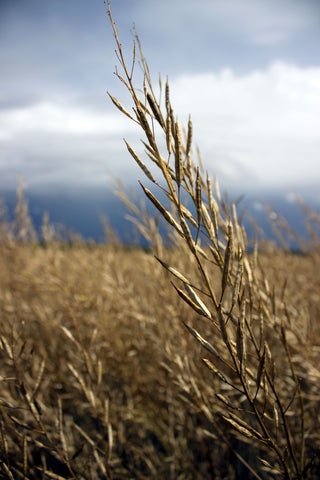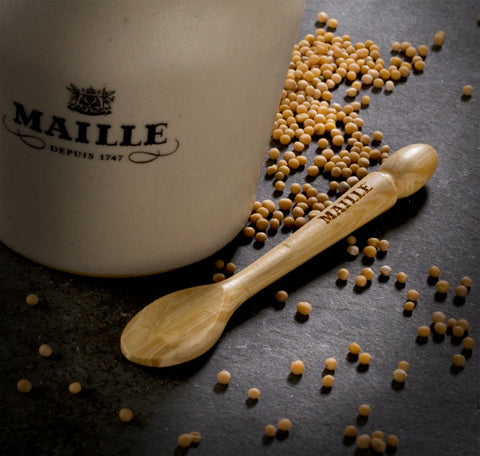Maille Discovery: Mustard Making from Seed to Spoon
Bonjour Bonjour!
Before we share how we make mustard with mustard seeds, we will let you in on a little miracle of nature.

By the end of June, the flowers of the mustard plant grow into a small green pod, which within three weeks turns a beige coloured, dry looking pod with a thorn on the top. If you rub the pod a bit, you will find it hides a small amount of mustard seeds: small but sturdy, bitter but pungent. Brown yet vibrant yellow on the inside, this little miracle of nature has opened endless food possibilities for over 6000 years.
The harvest happens at a very specific moment - it's a fine line between leaving the pods long enough in the sun to increase selenium, responsible for the pungency of mustard, and the rainy season. Once harvested, the pods are left to dry in huge sieves in dry silos. When dried, the seeds fall out of the pods, which are further shaken to make sure all seeds are released.

The seeds are then taken to our Chevigny factory in the greater Dijon region within 15 miles of the fields. A machine soaks them in water, cuts the seeds and separates them from the husk, leaving no more than 25% of the husk in the mix, as per an original Dijon recipe.
Depending on the mustard we want to make, we will add salt, white wine, or white wine vinegar, fruits, spices from around the world, herbs or even liquors and spirits.

Though our mustard making recipe is a closely guarded secret, we have a tip for you: you too can make your own flavoured mustard at home!
All you need is a good Dijon Originale as a base, add your preferred ingredients and leave to infuse for 48 hours. The longevity of the mustard will depend on the ingredients you choose but in most cases we'd recommend to use your prepared mustard within 2 weeks.
The Mustard Sommelier
